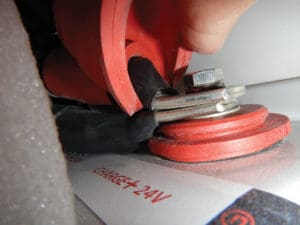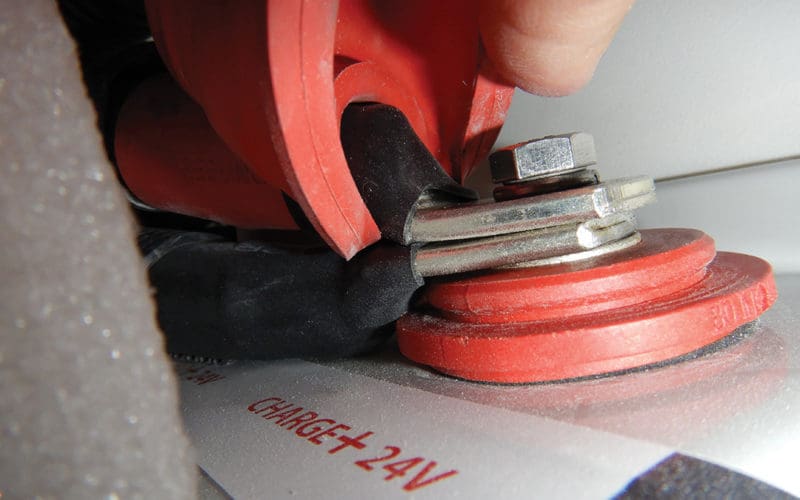
The issue of lithium battery safety has gained importance as lithium batteries are increasingly used aboard voyaging boats. News stories of lithium batteries in electric cars and cell phones catching fire might convey the idea that these batteries are unreliable. Following a request from the US Coast Guard, experts at the American Boat and Yacht Council (ABYC) technical department recently conducted some lithium battery tests. The ABYC testers attempted to create a situation in the lab in which lithium batteries caught fire, but they were unsuccessful. John Adey, president of ABYC, wrote: “We couldn’t start the fire…. We witnessed swollen cells, completely dead batteries, and multiple safety cutoffs (when not bypassed). We had a very hot summer here in MD. Even the high heat didn’t come close to a spontaneous combustion scenario.” The testers even added lithium batteries to an already burning fire. “We were able to add LiFePO 4 batteries to a local International Association of Arson Investigators (IAAI) boat burn — even there, no one detected any indication that the batteries themselves contributed to the fire.”
Though this is a heartening result, marine systems expert and frequent ON contributor Steve D’Antonio recently commented on lithium battery safety in a post to a boatowners forum.
“LFP battery systems stress the vessel’s electrical system like they have never been stressed before. Where a steel washer under a ring terminal used on a lead acid battery boat may never lead to an overheating scenario, in an LFP scenario it may very well have. Therefore, because of their power producing and accepting potential, LFP batteries may be indirectly responsible for overheating and fire events. This places a higher burden on electrical system designers and installers, there is now less leeway for errors.
“Case in point, a couple of months ago I inspected an LFP installation on a new vessel; cables leading from the batteries to BMS’s used heat shrink terminals. Sets of two of these terminals were stacked on top of each other at the studs, the heat shrink impinged on the contact area, reducing it from 100% to what I would estimate to be about 20%. If those terminals had been subject to heavy loads, it’s likely they would have overheated. I’ve seen this many times, it’s extremely common, but again, in an LFP scenario the threshold for faults like this seems to be lower.”
In a later email, D’Antonio added: “Virtually every new build project I’m working on, and have worked on for the past three years, got lithium iron phosphate batteries. I believe it can be done safely with a few caveats: use LFP chemistry, follow ABYC E11 and E13, follow manufacturer instructions, use meticulous ABYC compliant wiring practices, and obtain all gear from a reputable manufacturer as a package, and have them approve the installation plan.”

